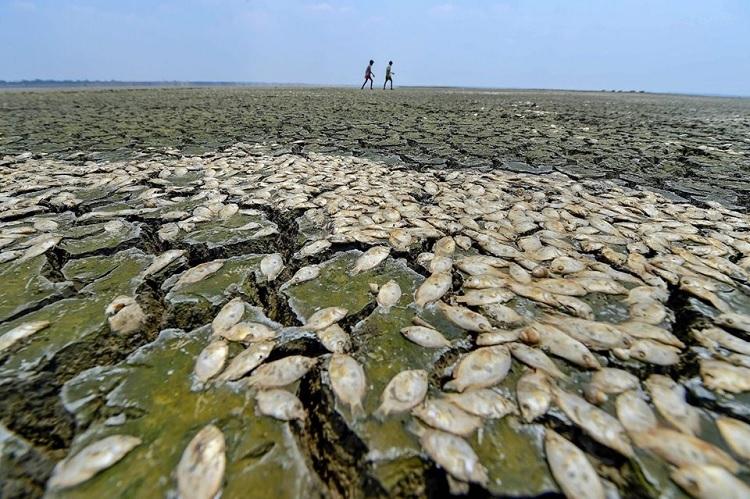2023 hurricane season marked by storms that “really rapidly intensified”

By William B. Davis and Judson Jones
2 December 2023
(The New York Times) – The 2023 hurricane seasons in the Atlantic and Eastern Pacific came to an end this week, with both basins experiencing an above average number of storms, fueled by extremely warm ocean temperatures.
The two basins had a combined 37 storms, 13 of which rapidly intensified, sometimes jumping multiple hurricane categories in less than a day.
A high proportion of rapid-onset storms this year exceeded the standard definition of rapid intensification — an increase of at least 35 miles per hour in sustained winds, over 24 hours. Experts said that this emphasized the way hurricane seasons are changing and the need for more reliable forecast models.
When storms intensify abruptly near land, it becomes more difficult to predict how severely places will be affected, and it leaves officials and residents with little time to prepare.
Newer and more specific hurricane intensity models, like the Hurricane Analysis and Forecast System (HAFS), helped experts forecast some of this rapid strengthening, but some storms still caught meteorologists by surprise. In one major hurricane, at least 50 people died because conditions worsened precipitously in a matter of hours.

El Niño’s impact in a year with record ocean heat
El Niño, a weather pattern that recurs every few years, typically suppresses the formation of hurricanes in the Atlantic and increases storm activity in the Eastern Pacific. This hurricane season, however, was very active on both sides of North America, partly because of increased ocean temperatures across the Eastern Pacific and the Atlantic. Each year, the season runs from May 15 until Nov. 30 in the Eastern Pacific and from June 1 until Nov. 30 in the Atlantic.
The warm waters across the Atlantic helped storms to overcome a weather phenomenon called wind shear, which was exacerbated by El Niño. With wind shear, changes in wind speed and direction with altitude can disrupt the structure of cyclonic storms as they form.
During the Atlantic hurricane season, 20 storms formed, seven of which reached hurricane strength, meaning sustained winds of at least 74 miles per hour. Three of those were major hurricanes, each of which rapidly intensified. Storms are given names when their winds reach or exceed 39 miles per hour, the threshold for a tropical storm.
The El Niño weather pattern led to 17 named storms in the Eastern Pacific. Of those, 10 rapidly intensified into hurricanes, and eight of those became major hurricanes — Category 3 or higher — with winds of at least 111 m.p.h.
This summer’s record high ocean temperatures were most likely enhanced by El Niño, but experts say the underlying influence of human-driven climate change is undeniable. And research by scientists has concluded that rapid intensification is increasing because of global warming.
“Such warm water ‘sets the stage’ for these events,” James P. Kossin, a climate scientist at the University of Wisconsin-Madison, wrote in an email.
“There is no question that the warming oceans have a human fingerprint on them,” said Dr. Kossin. “But this should be tempered when adding an El Niño event into the mix.” Without careful analysis, it is difficult to say how much El Niño conditions played into an individual storm’s rapid intensification versus how much climate change played a role.
In a 2019 study, experts stated that storms that rapidly intensify are typically associated with more forecast errors and cause a disproportionate amount of human and financial losses.
Philip Klotzbach, a hurricane researcher at Colorado State University, said the Atlantic was near normal when it came to the number of storms that went through rapid intensification.
In the Pacific, things were a bit different. Even though the season was only slightly above average and did not have as many named storms as the Atlantic, “it was quite amped for rapid intensification,” said Dr. Klotzbach. There were 17 named storms in an area that normally experiences about 15. But 10 of those went through rapid intensification, which is almost double the normal amount.
Dr. Klotzbach said that this year was also notable for the number of storms that intensified even faster than the “garden variety” of storms that meet the minimum definition of rapid intensification. In his analysis, Dr. Klotzbach said that the number of storms that “really rapidly intensified,” or strengthened by 58 m.p.h. or higher in 24 hours, was above average in both the Atlantic and the East Pacific.
In the Eastern Pacific, six of the 10 storms that rapidly intensified met Dr. Klotzbach’s higher threshold of intensification. An average season would typically have only two storms that would escalate this quickly.
In the Atlantic, two storms, Hurricanes Lee and Idalia, reached this extreme level of intensification. The Atlantic typically has only one. [more]
2023 Hurricane Season Ends, Marked by Storms That ‘Really Rapidly Intensified’


